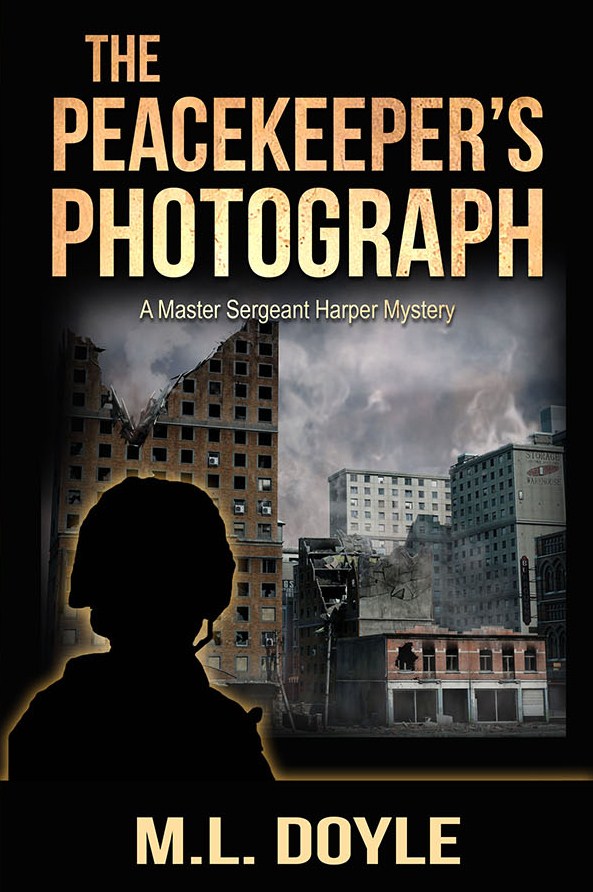 You know that hopeful feeling you get when your pages come back from an editor, but then you open it up and all you see is red? It feels like a jab to the guts when you realize it looks as if someone killed a chicken and sprayed their sacrificial blood all over your pages. And then you understand it’s not blood. Those are edits. Hundreds and hundreds of the bloody things and you feel as if it's not a chicken's blood, but your own ripped out insides someone has danced on and smeared all over your work. (more…)
You know that hopeful feeling you get when your pages come back from an editor, but then you open it up and all you see is red? It feels like a jab to the guts when you realize it looks as if someone killed a chicken and sprayed their sacrificial blood all over your pages. And then you understand it’s not blood. Those are edits. Hundreds and hundreds of the bloody things and you feel as if it's not a chicken's blood, but your own ripped out insides someone has danced on and smeared all over your work. (more…)
 Working with a designer to have the cover of your book created is like watching a tightrope walker without a net. It is thrilling, edge of your seat stuff, but you feel as if, at any moment, things could go very wrong, very quickly.
Working with a designer to have the cover of your book created is like watching a tightrope walker without a net. It is thrilling, edge of your seat stuff, but you feel as if, at any moment, things could go very wrong, very quickly.
While doing my research, I looked at scores of designer websites, was blown away by so many covers and impressed with what could be done, that by the time I finally selected someone to work with, I had high expectations. There were so many different designers to choose from, that I finally had to make my selection largely based on price. I’ve got a lot of work that I’d like to publish this year which means I can’t afford to pay three hundred plus dollars for each cover.
I contacted Su at Earthly Charms, we settled on terms and I gave her a general description to get her started. I also sent her links to covers I liked.
A couple of weeks later, Su sent me my first set of proofs. Here is where the tightrope walker began to sway in the wind, the feeling of impending disaster set my heart racing and for days I found it difficult to sleep.
My first impression was that she’d gotten them all wrong. We were working on two covers for the first two books in my mystery series. Neither of them worked for me. I considered looking for someone else. Looking at those covers made me sad. I felt as if my project was a failure. Were the books I’d written as bad as those covers? Was I crazy? What made me think I could self publish anyway? UGH!
Trying not to panic, I decided to treat them a bit like critiquing someone’s writing. I began by listing the things I liked and realized I not only liked those things, I loved them. Along with what I loved, like the font and the basic colors, I had a bunch of ideas for what could be improved and how to improve them. I listed those and didn’t hold back on exactly how I felt.
The next set of proofs were so much improved it felt as if that tightrope walker had made it to the other side and the crowd was standing in a raucous round of applause. They weren’t perfect, but we were very close. A few minor tweaks here and there and suddenly, I had the cover I dreamed of, the look I could be proud, to keep on my shelf and call my own. I love, love, LOVE them.
It was frightening at first, but like Su said, we had to start somewhere. I’ve decided that a great cover artist is someone who is not only creative and artistic but more important, someone who listens. I found that creative listener in Su.
I’d recommend her but she will be far too busy working on the rest of my work coming out this year.
 You write a book, you rewrite the book several times, you send it to a bunch of folks to read, you absorb their comments, you decide you’ve got your final product, you send it to your agent, your agent makes comments, you absorb those comments and finally it goes to your publisher.
You write a book, you rewrite the book several times, you send it to a bunch of folks to read, you absorb their comments, you decide you’ve got your final product, you send it to your agent, your agent makes comments, you absorb those comments and finally it goes to your publisher.
Eventually, the manuscript lands in the hands of an editor who reads every word, analyses every phrase and comes back to you with more comments.
In my opinion, the pages and comments that come back from your editor are the pages that require the hardest work.
For every other set of comments, you as the writer can choose to accept or reject any of those comments. Some comments you will know immediately are spot on. You incorporate them with gratitude. Other comments aren’t so easy to hear. Some you accept, others you reject because they don’t fit your vision, perhaps you don’t trust the reviewer or perhaps you’ve decided as the writer, the comments are just wrong.
But comments from an editor are different. This is the voice of your publisher. These are changes direct from the person who will turn your chick into the bird ready to leave the nest for good. You’re not as free to ignore these comments and suggestions as you would any other. These comments, at the very least, should be strongly considered.
So you work with them, you wrestle with them perhaps. Rewrites should be fun. But to me, the rewrites that happen as the result of an editors comments have an extra added pressure to them, and aren’t quite as much fun as others.
The good news is, these rewrites could be the final rewrites before your book finally makes it to the shelves. So we wrestle with them, we dedicate ourselves to them and we try to answer every question the editor has. Hopefully, the comments, no matter how difficult they may be, will lead to a better book.